Kraków 2009-06-23
Balice Airport.
Geographic coordinates: 50.078N, 19.786E. Elevation 241 m.
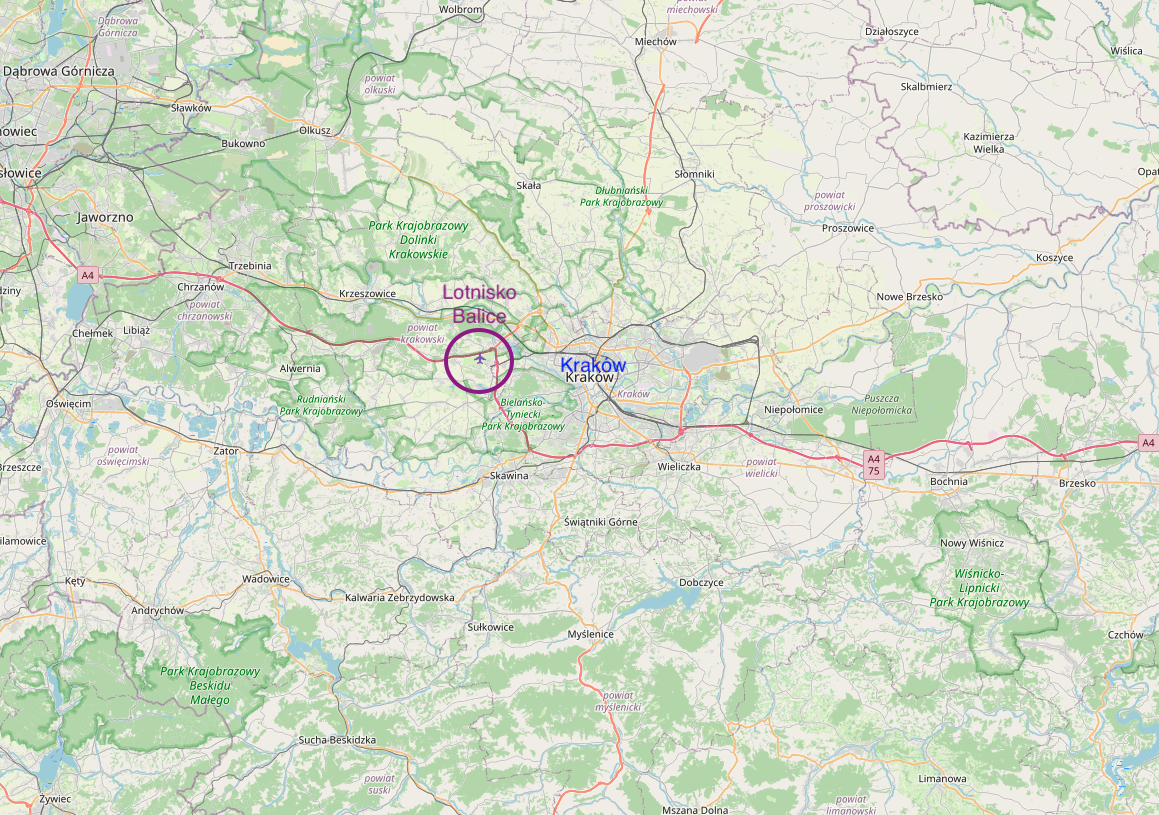

Balice Airport.
The full name of the airport is Kraków Airport. John Paul II and the 8th Transport Aviation Base. It is also an international airport and a military transport aviation base. Geographic coordinates: 50°04'40" N 19°47'05" E and 241 m above sea level. Tower: 118.100MHz. The airport has an IATA code: KRK, ICAO code: EPKK.
In the ranking of the most frequently visited Polish airports, it ranks second, after Okęcie. It has maintained the position of runner-up since 1963, when it took over from Czyżyny-Rakowice Airport.
For decades, the airport seemed to have no chance of development. Objective difficulties always indicated an upcoming regression. However, a combination of various circumstances always benefited the airport. Krakow, as the cultural capital of Poland, a pearl among monuments, a great industrial center and a pilgrimage center, is visited by thousands of people. Therefore, the Balice Airport is one of the gates to this city and the entire voivodeship, which in 2007 served 3 million passengers, i.e. the number of inhabitants of the entire Lesser Poland Voivodeship. 3 million 282 thousand people live in the Lesser Poland Voivodeship. people. The airport is doomed to success because approximately 8 million people live within a radius of 100 km from it, and currently (2009) there are no prospects for building a new airport in this area.
But Balice Airport is also, and perhaps above all, a military airport. Currently (2009) operated by the 13th Transport Aviation Squadron and the 8th Air Base.
The airport is located approximately 12 km west of the center of Krakow. It is located in the vicinity of the Tenczyński Landscape Park on the Jurassic Upland of Kraków-Częstochowa. It is equipped with one DS (RWY) with a concrete surface, dimensions 2,550 × 60 meters and direction 07/25. It is a class 4D airport with a class I precision approach, additionally equipped with runway centerline lights. This road has a concrete surface with a strength of PCN 52/R/B/W/T and allows the operation of most types of passenger and transport aircraft.
Parallel to the runway, on the south side, is a taxiway and a civilian apron capable of accommodating 17 medium-sized aircraft at the terminals.

The town of Balice.
Balice is a village located in the central part of the Lesser Poland Voivodeship, in Kraków County, Zabierzów Commune, west of Kraków. In the period 1975–1998, it belonged to the Krakow Voivodeship, and before 1975, also to the Krakow Voivodeship, but then there was a different administrative division of Poland.
The Rudawa River flows along the eastern border of Balice. The airport is located in the southern part of the town. There is a motorway junction, a motorway toll collection point and a gas station in the town. In addition to the motorway, provincial road No. 774 runs through the town.
The town is located in the Tenczyński Landscape Park. In the northern part of the town, on the hills of Garb Tenczyński, there is a large forest complex called the Zabierzów Forest. It is a favorite place for relaxation for residents and tourists. A tourist trail runs through it. It has a number of educational paths and bicycle routes. There are numerous rocks and gorges. On the eastern slope of this forest, where the Rudawa River breaks the Tenczyński Garb, there is a landscape nature reserve called Skała Kmity. Tourist attractions also include the Radziwiłł Palace. It was built around the 15th century as a wooden building on foundations. A vast garden was established around the palace. The founder was Seweryn Boner. The palace was the seat of distinguished noble families: the Boners, the Ossolińskis, the Firlejs and, of course, the Radziwiłłs, who in the second half of the 19th century thoroughly rebuilt it, making it completely brick. After World War II, the palace was taken over by the state. Currently, the palace houses the Institute of Animal Production.
The history of the military airport in Balice.
It is difficult to determine exactly in what year the Balice Airport was established. Without a doubt, it was an alternate airport for the Czyżyny-Rakowice Airport, so we will not be far from the truth if we assume 1930 as the date of establishment of this airport.
Of course, it was an airport with virtually no major facilities. Apart from the field workshop, gas station and staff barracks. The officers were quartered in the palace. The planes were hidden in the orchard. The airport was located very deliberately. The planes stationed there were to defend Krakow from the west.
Already in July 1939, German aviation significantly increased its air activity, violating the airspace of the Republic of Poland. The idea of ambush airfields, i.e. forward field airfields near Zawiercie and Wieluń, did not work very well. Our planes were unable to catch up with the German reconnaissance machines. After three weeks, the ambush was liquidated. However, the idea of forward field airfields was continued. From August 20, 1939, fighter planes from the 121st and 122nd Squadron of the 2nd Aviation Regiment began to be stationed at the airport in Aleksandrowice near Bielsko Biała, which was the summer airport of the Pilot School of the Air and Gas Defense League. These were 4 PZL P-11c planes and 8 pilots. It is known that at the same time the rest of the forces of the 121st Squadron were already stationed at Balice Airport. The squadron's circular projection reached Balice from Czyżyny on the night of August 26/27, 1939. 6 PZL P-11c planes and 1-2 RWD-8 planes were stationed in Balice. The remaining Squadrons were also transferred to other field airfields.
On the morning of September 1, 1939, the German air force attacked Kraków and the Rakowice-Czyżyny Airport, where there were no Polish planes. While taking off for a combat flight, an enemy group returning from the bombing of Krakow unexpectedly appeared over Balice. Commander of the Fighter Squadron, Capt. saw Mieczysław Medwecki, right after take-off, was shot down by a Ju-87, piloted by Sgt. Frank Neubert from I/StG 2 "immelmann". He was the first Polish pilot killed during World War II. Cadet. Władysław Gnyś, taking off in Medwecki's flight, outmaneuvered the German attacking him and continued the flight. In the Olkusz area, he encountered a squadron of Dorniers Do-17E from KG 77 returning from Krakow. He managed to shoot down two enemy bombers, which crashed near the village of Żurada. These were the first air victories achieved by a Polish pilot during World War II. In the afternoon, on the first day of the war, the squadron was transferred to the Igołomia field airport (25 km east of Krakow). On the first day of the war, the pilots in Aleksandrowice took their toll on the enemy. 30 sorties were made, destroying two Heinkel He-111 bombers and a Henschl Hs-126 observation plane without any losses. The victories for the 121st Squadron were achieved by platoon. saw Leopold Flanek (in the Kęty area) and Cpl. saw Jan Kremski (in the Třinec region). On the evening of September 1, 1939, by order of the new commander of the 3rd/2nd Fighter Squadron, Capt. saw Walerian Jasionowski, planes from the airport in Aleksandrowice joined the parent squadron at the Igołomia airport. There were no more planes in Balice.

As we can see, the great combat trail of our air aces; Wacław Król, Władysław Gnyś and others started from the Balice Airport.
The status of the flying personnel of the 121st Fighter Squadron on September 1, 1939, at the airport in Balice: Squadron Commander - Capt. pil. Tadeusz Sędzielowski (from September 9, 1939, second lieutenant pilot Wacław Król). Deputy Commander – 2nd Lt. pil. Wacław Król. Squadron Technical Officer 2nd Lt. tech. George Deep. Chief of Squadron Mechanics - senior foreman of the troops. Józef Żak. Chief of Administration and Disciplinary of the Squadron - Senior Sgt. Józef Skoskiewicz. Pilots: second lieutenants Tadeusz Kawalecki, Tadeusz Nowak; cadets Władysław Chciuk, Władysław Gnyś, Ryszard Koczor, Franciszek Surma; plut. Leopold Flanek, corporals Jan Kremski, Piotr Zaniewski; senior privates Tadeusz Arabski, Marian Futro.
Winners of air battles (according to J. Pawlak): W. Gnyś 2 Do-17, L. Flanek 1 and ½ He-111, J. Kremski 1 and ½ He-111, ½ Hs-126, T. Arabski 1 Do-17 , W. Król ½ Do-17, T. Nowak ½ He-111, P. Zaniewski ½ Do-17, key: Gnyś, Flanek, Arabski 1 He-111. Total: 8 and ½ planes shot down. Damaged NPL planes: T. Kawalecki 1 plane unknown, W. Król and P. Kowala 1 plane unknown, J. Kremski and T. Arabski 1 Do-17, key: Nowak, Koczor,Surma 1 Do-17. Total: 4 planes damaged.
Losses of the 121st Squadron in flying personnel and aircraft: Personnel: killed - Capt. M. Medwecki, captain T. Sędzielowski, senior private M. Fur. Airplanes: condition - 10 P-11c, supplemented on September 2, 1939 - 1 P-11c, destroyed - 6 P-11c, evacuated to Romania - 5 P-11c.
During the German occupation, no planes were based in Balice.
Balice Airport. 1945 year.
Probably from January 1945, for several weeks, the airport in Balice was occupied by Soviet aviation. After World War II, the airport returned to Polish military jurisdiction, but no fighter squadron (regiment) was stationed there. In April 1951, after the 7th Fighter Aviation Division was established, the airport came under its command. After the parade in Warsaw, on July 22, 1955, the 2nd Fighter Aviation Regiment stationed in Czyżyny, part of the 7th DLM, was transferred with the main forces to the Balice airport. This was due to the construction of the metallurgical plant and Nowa Huta. However, for several years, 2 PLM used both airports in parallel. 2 PLM used Yak-23 aircraft at that time.
1963 turned out to be a breakthrough year, when the decision was made to disband the 2nd PLM, and in its place, the new 55th Transport Aviation Regiment was established, Order No. 040 of April 29, 1963, the 55th PLTr became a continuator of the tradition of the 13th Transport Aviation Regiment, reformed by Order No. 91 of October 31, 1944, of the Supreme Commander of the Polish Army from the 713th Transport Aviation Regiment of the 6th Air Army of the Soviet Air Force.
On May 8, 1963, the command of the 55th PLTr was formed, consisting of: Commander Colonel Pilot Aleksander Milart. Deputy commander for political affairs, Major Jan Madej. Chief of Staff Major Mieczysław Hereda. Deputy for supplies, Lieutenant Colonel Kazimierz Srótek. Deputy for engineering and technical matters, Major Edward Ostrowski. Commander of the aviation squadron, Major Stanisław Gomula.
The main tasks of the 55th PLTr included; Securing the airfield maneuver of air regiments and tactical formations. Security of parachute training of the 6th Airborne Division. Carrying out photographic flights (aerofoto). Conducting operational flights involving the transport of cargo for Polish Army units. Transport of cargo outside the country.
From May 15, 1963 to June 30, 1963, the first landing of jumpers from the 6th DPD took place at the training ground (airport) in Jawor.
On October 20, 1963, the unit received a banner presented by the Commander of Operational Aviation, Brigadier General Pilot Franciszek Kamiński.
In April 1965, pilot captain Bronisława Dudek, one of three women pilots in the Polish Army at that time, came to 55 PLTr from the Dęblin Aviation School.
In 1966, a selected part of the flying staff was sent to CCCP to be trained on a new type of Antonov An-12 transport aircraft, of which our army purchased two copies. Antonov An-12 no. 6344307 nb 50 and Antonov An-12 no. 6344308 nb 51. This machine was the largest transport aircraft operated in Poland for many years, until 1993. The An-12 was the equivalent of the American C-130 Herkules aircraft. One of these aircraft, Antonov An-12 No. 6344307 nb 50, was shot down on May 13, 1977, in Beirut, burying the entire crew. Crew; aircraft commander, lieutenant colonel pilot Henryk Bajer, (co-pilot) lieutenant colonel pilot Tadeusz Florek, lieutenant colonel navigator Jan Kowalik, flight technician lieutenant colonel Jerzy Grzywalski, key technician major Adam Rybak, landing equipment technician captain Janusz Lech, radiotelegraphist ensign Kazimierz Krupka, NN, NN. Honor their memory! This tragedy is described in a separate chapter.
In September 1967, in accordance with the trend prevailing in the Polish Army at that time, the unit returned to the name from the period of World War II and by Order of the Minister of National Defense No. 025 of September 30, 1967, it was named the 13th Transport Aviation Regiment.
On September 13, 1972, the first Antonov An-26 transport planes purchased from CCCP landed at the Balice airport. They were used in the Polish Army until 2008.
Since 1970, a new structure has been in force in the Regiment; 1st Squadron – An-26 planes (12 pieces). 2nd Squadron – An-2 planes. 3rd Squadron – Il-14 (maximum 17 pieces) and An-12 (2 pieces). During this period, the remaining Li-2 aircraft and some Il-14 aircraft were withdrawn from service. Some Il-14 aircraft were adapted to perform photogrammetric tasks.
In the period from January 23, 1979 to January 25, 1979, after the earthquake in Yugoslavia, the Regiment's planes transported over 100,000 kg of medicine, clothing and tents.
In July 1979, the 2nd Squadron began permanent duty in the National Emergency Medical System. Since 1986, 13 PLTr has been participating in the Heart Action for the Cardiology Clinic in Zabrze, transporting organs for transplantation. This was thanks to, among others, Professor Zbigniew Religa. This action is continued under the name Action Heart until now (2020). The 8th Transport Aviation Base from Balice takes part in it.
In 1980, 13 PLTr began cooperation with the National Bank of Poland, transporting money from the headquarters in Warsaw to several cities in Poland.
In 1982, An-26 aircraft took part in exercises codenamed Shield-82 in Bulgaria.
In 1999, the Republic of Poland joined NATO. Therefore, crews from 13 PLTr began to participate in the Allied Harbor and Eagle Eye 1999 exercises. The first crew to land at the NATO base in Naples was the crew of Major Pilot Jarosław Budzyński in an An-26 aircraft.
On December 31, 2001, the 13th PLTr was disbanded pursuant to the Order of the Minister of National Defense No. PF 24 of October 3, 2000, and on January 1, 2001, the 13th Transport Aviation Squadron and the 8th Air Base were established.
In 2002, 13 ELTr received the first M-28 B Bryza-TD aircraft, with a total weight of 7,500 kg. These planes replaced the aging An-2.
In 2003, 13 ELTr adopted the first CASA C-295 M aircraft. These machines replaced the long-lived An-26. By December 2008, 12 C-295 M machines were accepted. But in January 2008, one Nb 019 plane was lost in a crash, and, more tragically, 20 officers from the Polish Air Force were killed. Honor their memory!
Commander of the 13th PLTr;
Pilot Colonel Aleksander Milart 4/06/1963 – December 7, 1973 Colonel pilot Henryk Rzemienicki December 8, 1973 – September 2, 1980 Lieutenant Colonel, certified pilot Henryk Boroń, September 3, 1980. – May 6, 1982 Colonel pilot Julian Grzegorczyk 7/05/1982 – January 7, 1985 Lieutenant Colonel certified pilot Piotr Biliński 8/01/1985 – November 6, 1986 Lieutenant Colonel, certified pilot Zdzisław Domański, November 7, 1986. – June 8, 1989 Colonel certified pilot Zbigniew Herc 9/06/1989 – January 8, 1994 Lieutenant Colonel, certified pilot Janusz Szpechciński, January 9, 1994. – May 27, 1997 Colonel certified pilot Józef Kurczap 28/05/1997 – July 30, 1999 Colonel certified pilot Tomasz Drewniak 31/07/1999 – December 31, 2000
Commanders of the 13th ELTr;
Lieutenant Colonel, certified pilot Sławomir Żakowski, January 1, 2001. – September 30, 2005 Lieutenant Colonel, certified pilot Leszek Leśniak, October 1, 2005. - 2008 Lieutenant Colonel, certified pilot Dariusz Janiszek, 2008. - 2010
Commanders of the 8th Blot;
Lieutenant Colonel certified pilot Tomasz Drewniak 1/01/2001 – June 7, 2004 Colonel M.Eng. Krzysztof Krasnodębski 8/06/2004 – August 30, 2006 Lieutenant Colonel, certified pilot Sławomir Żakowski, August 31, 2006. – February 26, 2008 Colonel M.Eng. Mirosław Jemielniak 27/02/2008 - August 2010 Lieutenant Colonel, certified pilot Jacek Łazarczyk, August 2010 - May 12, 2014 Lieutenant Colonel Pilot Krzysztof May 12, 2014 - June 10, 2016 Lieutenant Colonel M.Eng. Marek Majocha June 2016 - October 2016 Colonel Ph.D. Eng. pilot Krzysztof Szymaniec October 10, 2016 - September 29, 2017 Colonel Grzegorz Kot September 30, 2017 - October 29, 2017 Colonel M.Eng. pilot Paweł Bigos October 30, 2017 - …
Bielany housing estate.
For many years, a residential estate in Krakow's Bielany district, approximately 5 km from the airport, was associated with the military unit. A significant part of the unit's staff lived here. The distinguishing feature of the estate is the Yak-23 fighter plane placed as a monument.
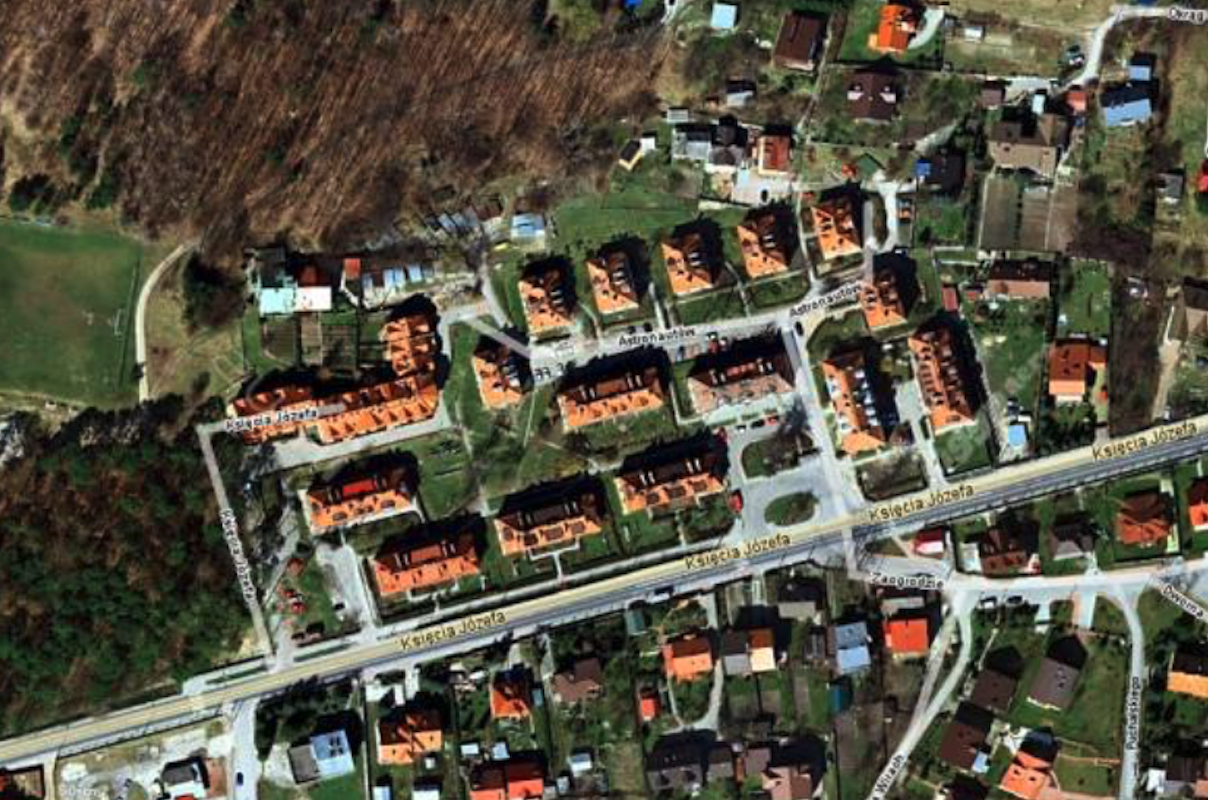
History of the Civil Airport.
60 years.
From 1923 to 1963, the civilian Czyżyny-Rakowice Airport operated as Krakow's airport. At the turn of 1963/1964, passenger traffic was transferred to Balice Airport, although for several years, in emergency situations, PLL LOT machines could land in Czyżyny. Also in 1964, medical aviation was moved from Czyżyny to Balice.
Several hectares of land located in the eastern part of the airport, managed by Przedsiębiorstwo Porty Lotnicze, were allocated for the needs of passenger aviation. Administrative buildings, a hangar, an apron, a taxiway and a hangar were made available to civil aviation. The apron could easily accommodate three planes the size of An-24 or two Il-18s, but as the future showed, a plane the size of Tu-154 had major problems and positioned itself at an angle.
The hangar was mainly used by the Medical Aviation. It had a Morawa-type twin-engine plane, an SM-1 helicopter, and later a Mi-2. The air ambulance was practically the user of the hangar. The hangar was demolished in 2016.

Only one carrier used the airport, our PLL LOT. The planes were not based in Balice. They brought passengers, picked up new ones and flew away. In the 1960s, 2-4 planes arrived daily. Almost all flights were domestic flights. Only after the border crossing was opened did passenger flights abroad become possible. Balice was then connected to; Warsaw, Gdańsk, Poznań, Wrocław and Rzeszów.
In 1968, the first real station building was put into use. For those times, it was distinguished by its modern architecture. It was spacious, made of concrete and brick with large glass surfaces. It was a Swedish-type building in which the central part was undeveloped and looked like a square from above. The undeveloped center, measuring 4 m x 4 m, let a lot of light into the building. He served for many long years.
1970s.
The 1970s saw further, although slow, development of civil aviation in Balice. The airport infrastructure was developing. The Airport Fire Department was organized. For its needs, modern Western Barracuda combat vehicles were purchased.
The network of permanent domestic connections was systematically developing. From Krakow you could fly to Szczecin, Koszalin and Słupsk. Due to the launch of the trans-Atlantic connection between Warsaw and New York, the number of flights on the Krakow-Warsaw route has increased significantly. PLL LOT also launched an interesting connection on the Warsaw - Zakopane route, which was operated by plane from Okęcie to Balice, and then directly by coach to Zakopane. The revolution for Balice was the launch of permanent connections southwards to the countries of People's Democracy. These routes were served by Il-18 and modern Tu-134 aircraft. The most popular flights were to Varna in Bulgaria. During this period, the number of charter flights increased. Planes from Balice flew directly to London, Paris and Vienna.
1980s.
First, the crash of the Il-62 SP-LAA Mikołaj Kopernik, and then the martial law introduced in Poland by General Wojciech Jaruzelski, caused a collapse in LOT Polish Airlines transport. We must also add several attempts to hijack LOT Polish Airlines planes. Few flights were operated from Balice. A significant percentage of them were cargo flights, carrying mail and money. For some time, militia and security officers, armed and uniformed or not, appeared on board the planes. The incompetence of the party-communist authorities led to a deepening economic recession. This did not have a positive impact on the development of passenger traffic, not only in Balice. The opening in 1980 of a fast railway connection between Krakow and Warsaw was also a big blow for Balice. The express, traveling along the so-called Central Coal Line, covered this distance in 2 hours and 30 minutes. On this route, the plane began to lose to the train. It is true that the flight took 45-55 minutes, but you had to add the journey to the airport, and you had to be there 60 minutes before departure. Let's also take into account the limited weight of luggage, not to mention the ticket price. And we won't take a walk on the plane, we won't go to WARS and we won't open the window.
1990s.
We often mention the importance of the changes initiated in 1989 on the website. These changes cannot be overestimated. Although they were not always in line with the will of the Nation. Predatory capitalism and lame democracy began, but it was better than socialism. Positive changes in Poland and breaking away from the influence of CCCP resulted in more and more tourists, entrepreneurs and pilgrims coming to Krakow. A large percentage of them arrived in Krakow by air. Balice Airport began to serve more and more passengers.
1995 year.
In 1995, decisions were made to expand the Balice Airport. On June 17, 1995, Pope John Paul II consecrated the cornerstone and signed the foundation act for the expansion of the airport. The port was designed to handle approximately 500,000 passengers annually. The investment cost PLN 38.8 million.
The construction was completed in April 2001 and consecrated by Cardinal. Franciszek Macharski. This important day was commemorated in the form of a commemorative plaque.
In 1995, the airport was named John Paul II. Okęcie Airport also competed for this honorable name, but the strong ties of the Greatest of Poles with Krakow meant that this honor went to Balice Airport.
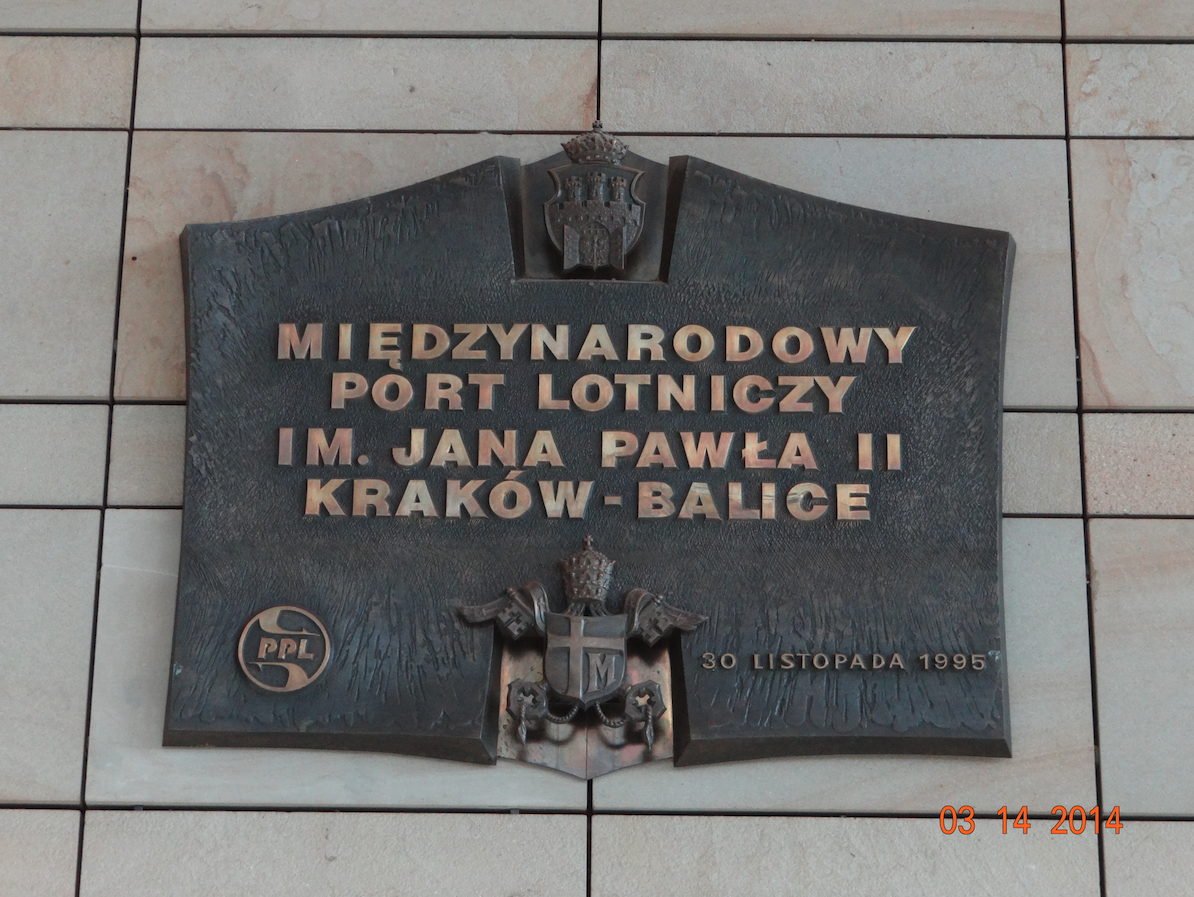
In addition to the construction of the airport building itself, the port was adapted to handle modern passenger aircraft of Western and American production.
1996 year.
The new reality forced organizational changes and the establishment of new economic entities. On July 5, 1996, a limited liability company under the name "Kraków - Balice International Airport" with its registered office in Balice was established by a notarial deed. On September 3, 1996, the Company took over the fixed assets contributed by the Partners in the form of contributions in kind. On March 18, 1997, the Company obtained a license from the Department of Civil Aviation of the Ministry of Transport and Maritime Economy to conduct business activities in the civilian part of the airport, and then obtained the required certification. On July 1, 1997, the Kraków - Balice International Airport Company started its operational activities by taking over all employees of P.P. "Airports" and taking over the management of the airport. The company with its registered office in Balice, 32-083 Balice ul. Capt. M. Medweckiego 1, is a commercial law company with a share capital of PLN 101,232,000, entered into the register of entrepreneurs kept by the District Court for Kraków - Śródmieście in Kraków, 11th Commercial Division of the National Court Register, under KRS number 0000008522. In a formal sense, the airport is still a facility shared by the military and the civilian side.
On July 23, 1998, by resolution of the Shareholders' Meeting, the Company adopted the name International Airport. Jana Pawła II Kraków - Balice Sp. z o. o., i.e. manages the civil part of the airport. The total area of the airport is 426 ha, including the area managed by the International Airport. Jana Pawła II Kraków - Balice Sp. z o. o. there are approximately 24 hectares.
The purpose of the Company's activities was; expansion, modernization and operation of the Krakow International Airport and undertaking all activities related to the handling of air passenger and cargo traffic, including the international border crossing at the airport, in order to promote Krakow and the region, improve tourist traffic, and more generally, perform tasks related to public utility. In accordance with the Act of March 8, 1990 on municipal self-government.
Main shareholders of the John Paul II Kraków-Balice Airport Company: PP "Porty Lotnicze" 154,264 shares, PLN 77,132,000, 76.19%. Małopolskie Voivodeship 46,012 shares, PLN 23,006,000, 22.73%. City commune Kraków 2,104 shares, PLN 1,052,000, 1.04%, Zabierzów commune 84 shares, PLN 42,000, 0.04%.
New age.
What began to happen in Balice at the turn of the century eclipses everything that has happened since 1963. Such dynamic development is the undoubted success of the Port of Balice. All shareholders of the Company were keenly interested in the most favorable development. As soon as the new terminal (station) was put into use, they started thinking about building another one.
In 2003, the Irish low-cost airline Ryanair conducted talks about opening connections from Krakow airport. However, the airport authorities did not agree to reduce airport fees. However, the city and provincial authorities have taken action to build Terminal 2 for low-cost airlines. However, there were difficulties related to the complicated ownership situation of the airport and the lack of a clear situation as to who was responsible for it. Although a new terminal has not yet been built, the first low-cost airlines have already appeared, which forced traditional carriers to reduce ticket prices on some routes.
Here's a little explanation about the land. At that time, the Company owned approximately 24 hectares of land. It was not possible to acquire the areas to the west used by the 8th Air Base. However, it was realistic to obtain an area towards the east, approximately 35 hectares, where, among other things, a car exchange was organized. This area was under the responsibility of AMW. Therefore, the further development of the Balice Port depended on the acquisition of land managed by the Military Property Agency. The problem, however, was that AMW wanted to sell them, not give them away for free. And media pressure and visits from high government officials did not help. The law on this topic was consistent and clear. Local governments wanted plots of land from the army for free throughout Poland, and the law prohibits such a solution. So let's not be surprised that in 2008, the Government of Prime Minister Donald Tusk took steps to liquidate AMW, which only proves the incompetence of this Government, which was unable to navigate the existing law. Nay. AMW has already consented to the construction of new facilities in these areas. Importantly, it can sell these areas without a tender if they are important for social purposes, and such a situation occurred here. The only question left is the price and discount. This means that the development of Balice Airport was not threatened.
In 2004, new connections also appeared in Central Europe. The Katowice Airport in Pyrzowice, better known to aviation enthusiasts as the Mierzęcice Military Airport, has become a serious competitor. Katowice did a better job of attracting cheaper carriers. Additionally, the offer included: flights from Krakow abroad, and they carried them out by transporting passengers by coach from Krakow to Pyrzowice. As a result, passengers benefited.
On October 13, 2004, the low-cost airline Easy Jet was the first to launch regular connections from Krakow.
On November 4, 2006, the Balice port served its 2 millionth passenger in 2006.
Road connection.
The A4 motorway runs in the immediate vicinity of the airport, with a motorway junction in three directions; Katowice, Krakow Center and the Western-Southern Ring Road. The first sections of the motorway were put into operation in 1985. The ride to the city center takes 20-30 minutes.
The former airport connection with Krakow was carried out via four road connections. There were two basic paths. The first one to the north through Zabierzów and Bronowice, the second to the south through Kryspinów, Bielany and Przegorzały. The other two roads were shorter but narrow. One through Mydlniki to Bronowice, the other through Olszanica and Chełm to Ciche Kącik.
Plans for the future in 2009 looked promising; the city was planned to build a new two-lane road to the airport, which would start at today's corner of Armii Krajowej Avenue. Construction of a new provincial road connecting Zabierzów with Kryspinów through Wola Justowska. This would relieve the traffic on the existing road No. 774 Zabierzów-Kryspinów. GDDKiA will connect new roads with a system of exits to the Krakow bypass and the A4 motorway.
Railway connection. 2006.
The railway siding connecting the airport with the Mydlniki station was built in the 1950s. Most goods, especially fuel, were and are still delivered by train. The line was single-track, non-electrified.
In 2004, the proposal of a railway connection between the airport and the city center, using the existing railway siding, was once again revived. This time, however, the idea was implemented.
From May 26, 2006, railbuses ran on the route Kraków Główny Railway Station - Balice Airport through Mydlniki. The bus ride from the city center took 15-16 minutes. The train was called Ekspres Balice.
Currently (2009) the train runs every day, almost 24 hours a day, except late night hours, every 30 minutes. The price of a normal single-trip ticket was PLN 7. You can also buy a ticket from a machine on the train, which accepts banknotes and gives change. The train does not stop at intermediate stations. Only some trips in each direction stop at the Kraków-Łobzów stop. Line service: two diesel railbuses (SA133-004 and SA133-005), in reserve SA101-001 + SA121-001 and SA109-002. The trains are air-conditioned, number of seats: 140-146, total number of seats: 300.
However, currently (2009) the railway line requires modernization. Firstly, railway crossings should be eliminated and replaced with viaducts. A railway stop should be built directly opposite the airport. There was also talk of possible electrification of the section from Mydlniki to the military base.
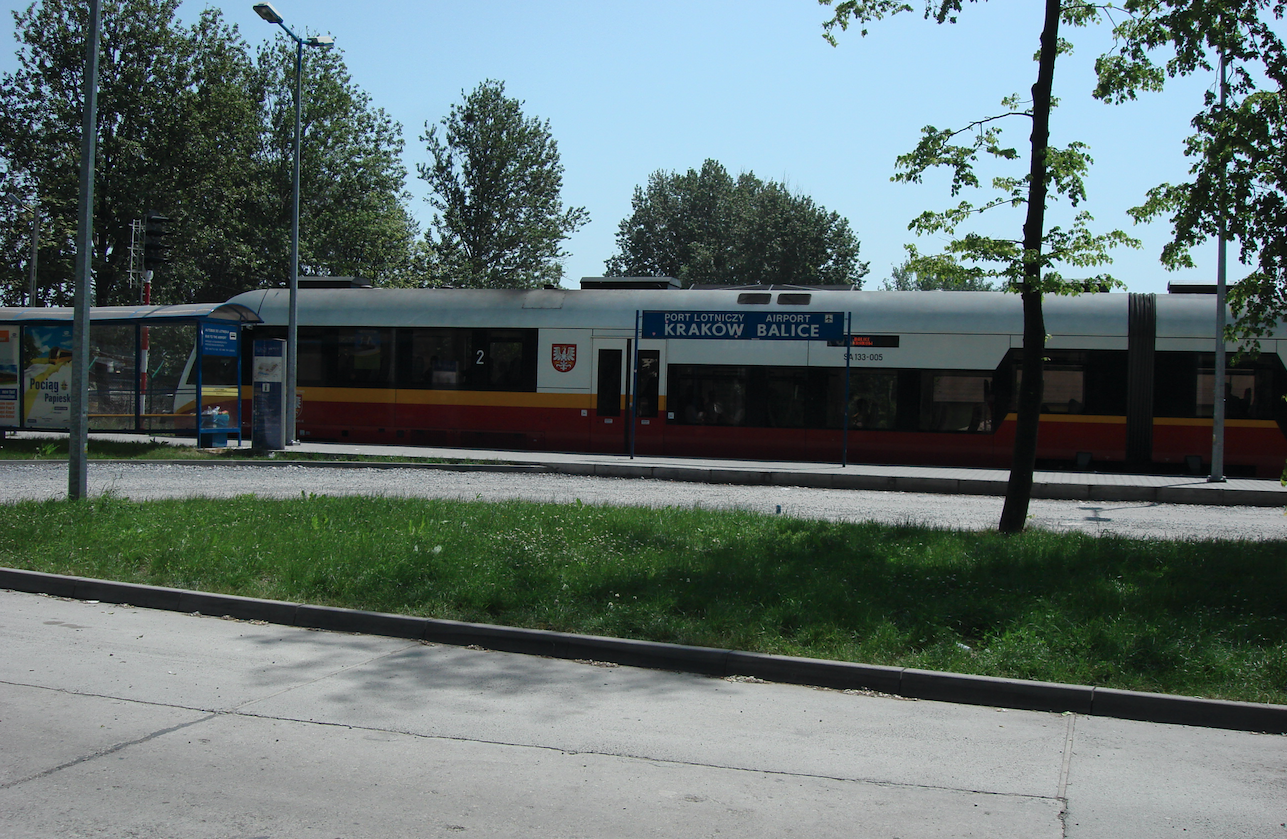
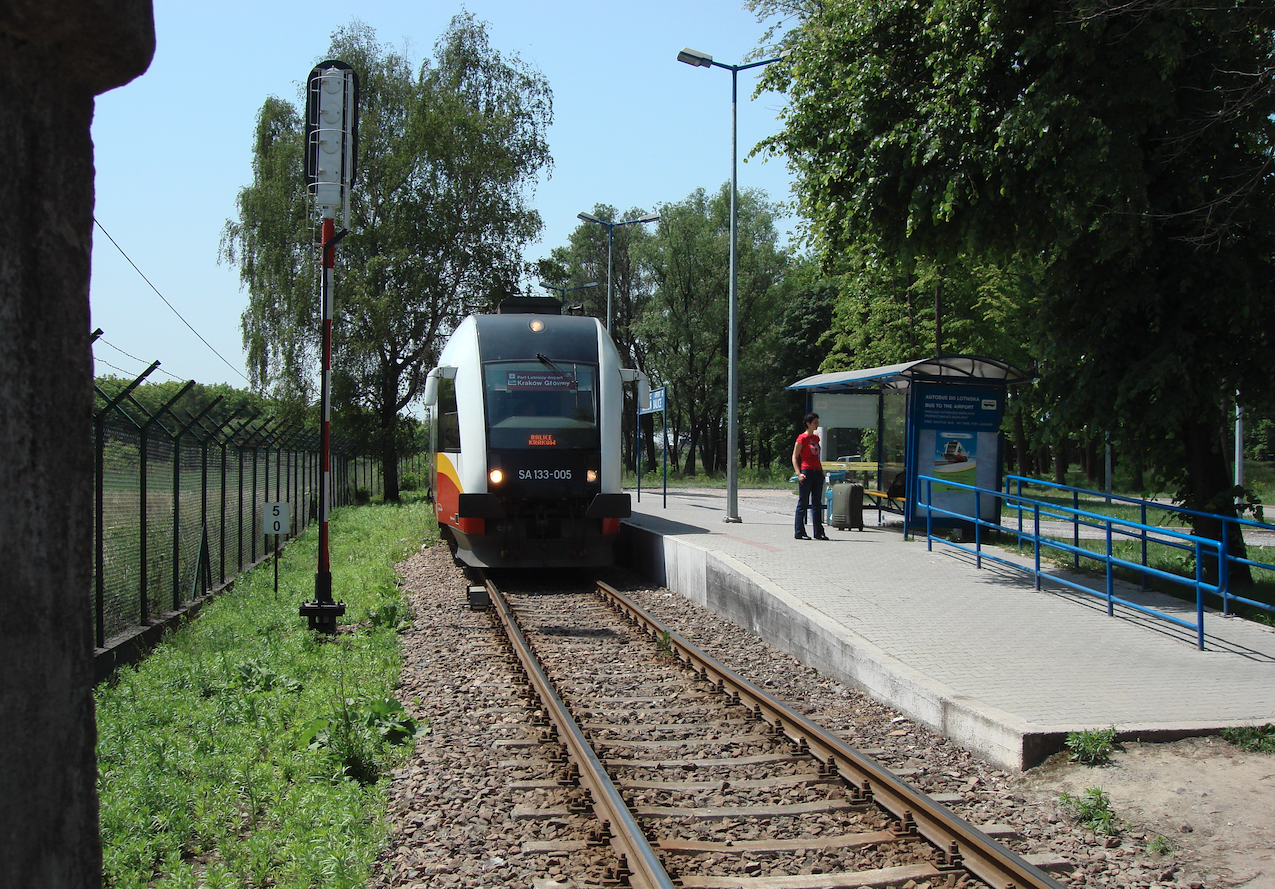

In 2014, the platform was no longer used because a new railway station was being built next to the multi-storey car park.
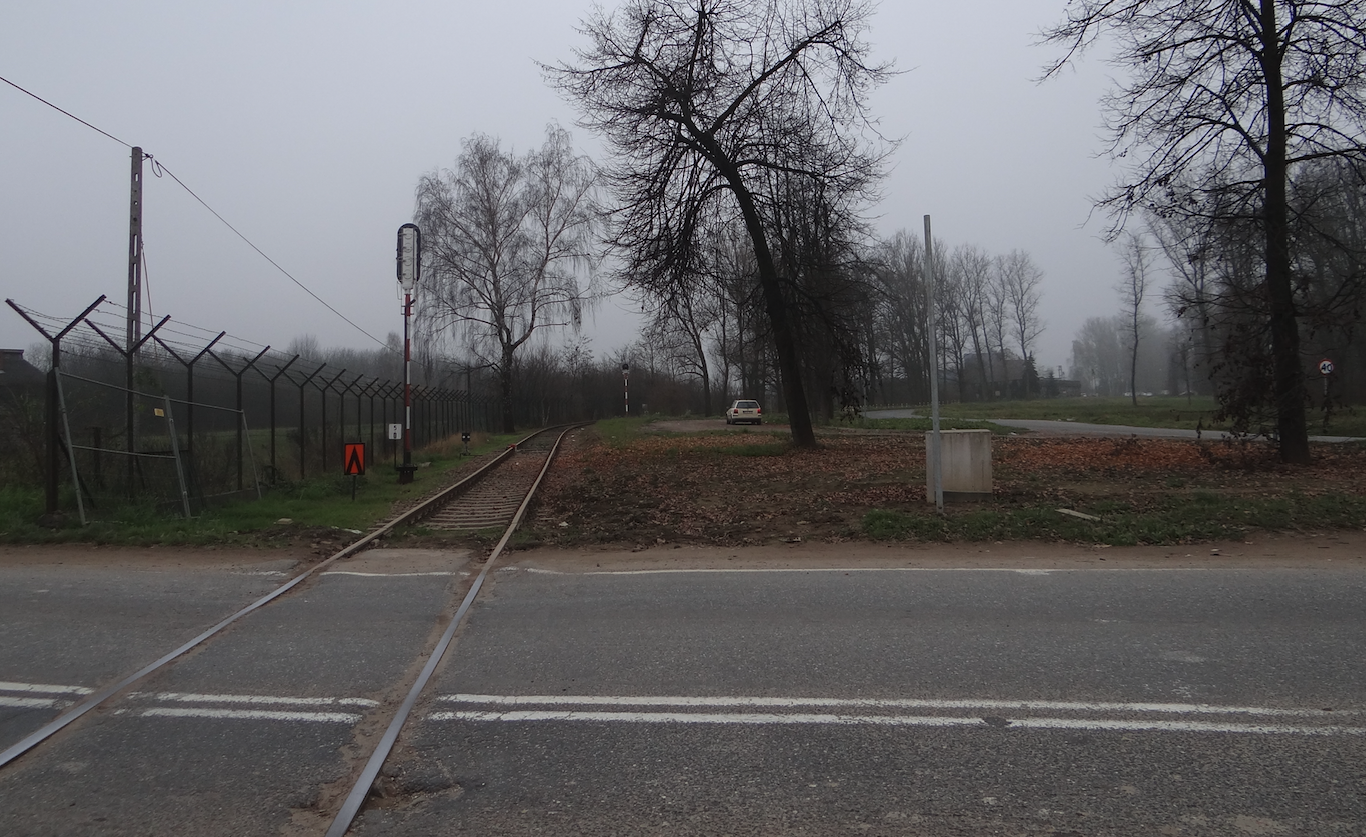
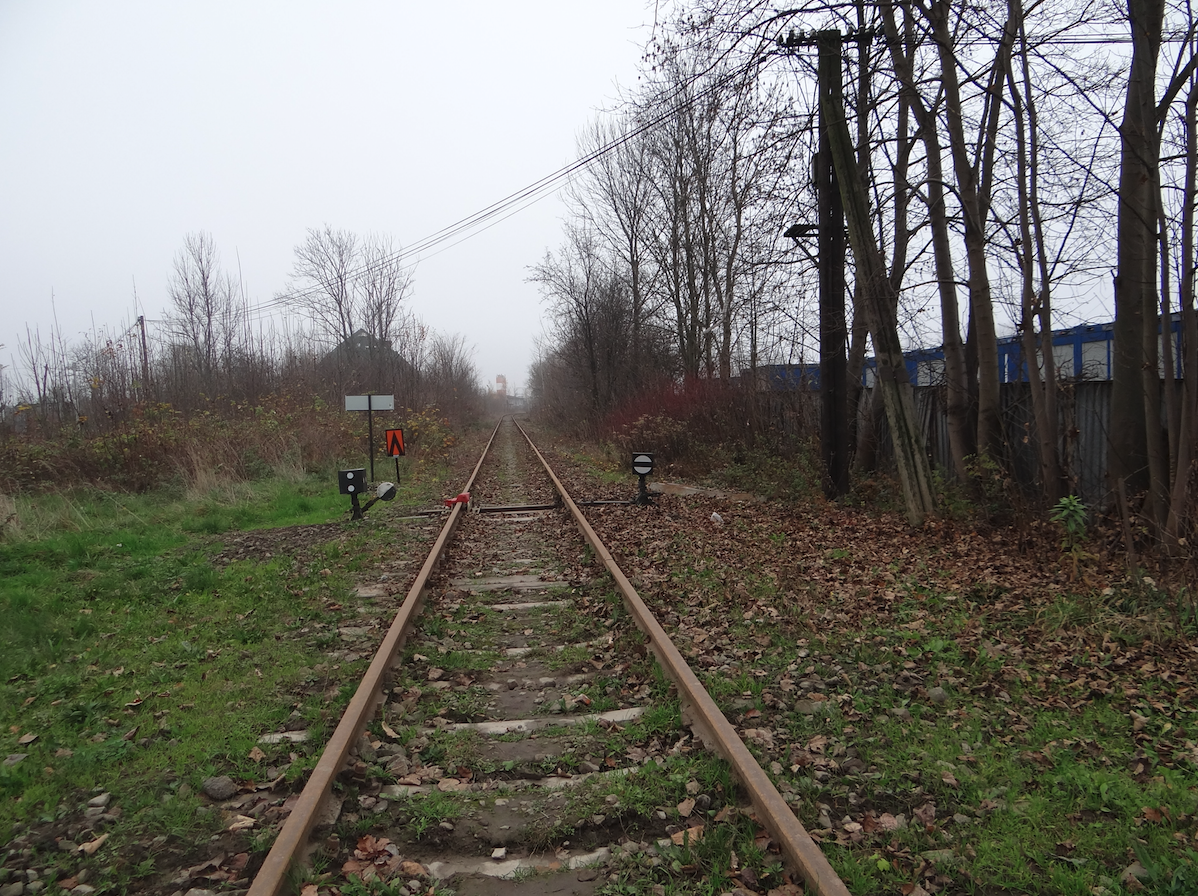
2007 year.
In 2007, the Company undertook a large-scale advertising campaign for the airport. On September 4, 2007, the name of the airport was changed from International Airport. Jana Pawła II Kraków-Balice at Kraków Airport. John Paul II. The name is definitely shorter. A new logo has appeared, with a motif of dandelions taking off and the colors are navy blue, blue and white. This was a new strategy of the Company's Management Board to advertise the Airport even better.
In 2007, you could fly from Balice to 62 airports in 20 countries. On December 20, 2007, the airport served its 3 millionth passenger in 2007.
Terminal 1. 2007 year.
Commissioned in 2001, the Terminal has been expanded. There were two premises. The first is a systematic increase in the number of passengers, the second is Poland's accession to the Schengen area, which makes traveling abroad easier. This is about separating citizens of European Union member states, who are not subject to customs and passport control, from passengers from other countries. This required organizational and investment changes. On July 20, 2007, a new part of Terminal 1 was opened. Passengers have 3,000 square meters of space, 15 registration stands and 5 control stands. The Schengen Agreement has been in force in Poland in air traffic since March 1, 2008.
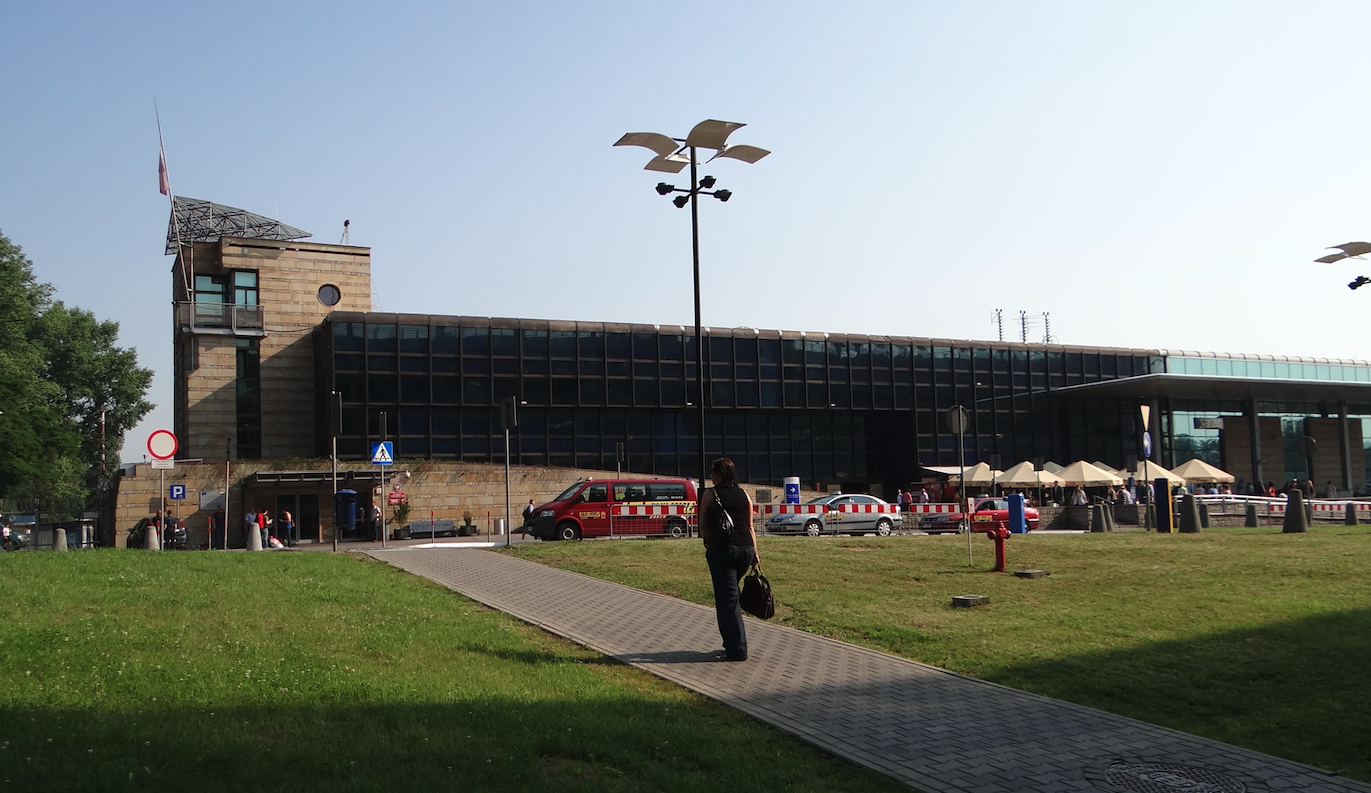
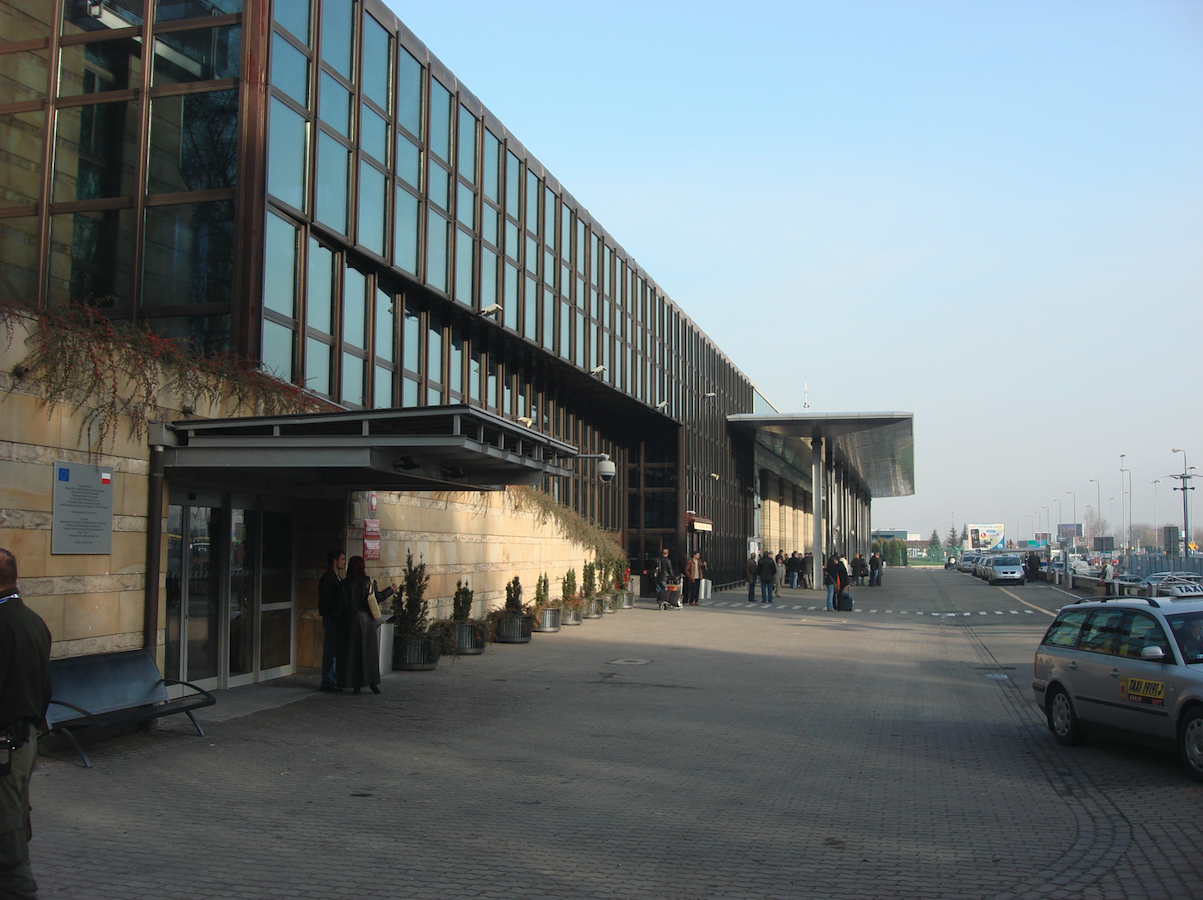
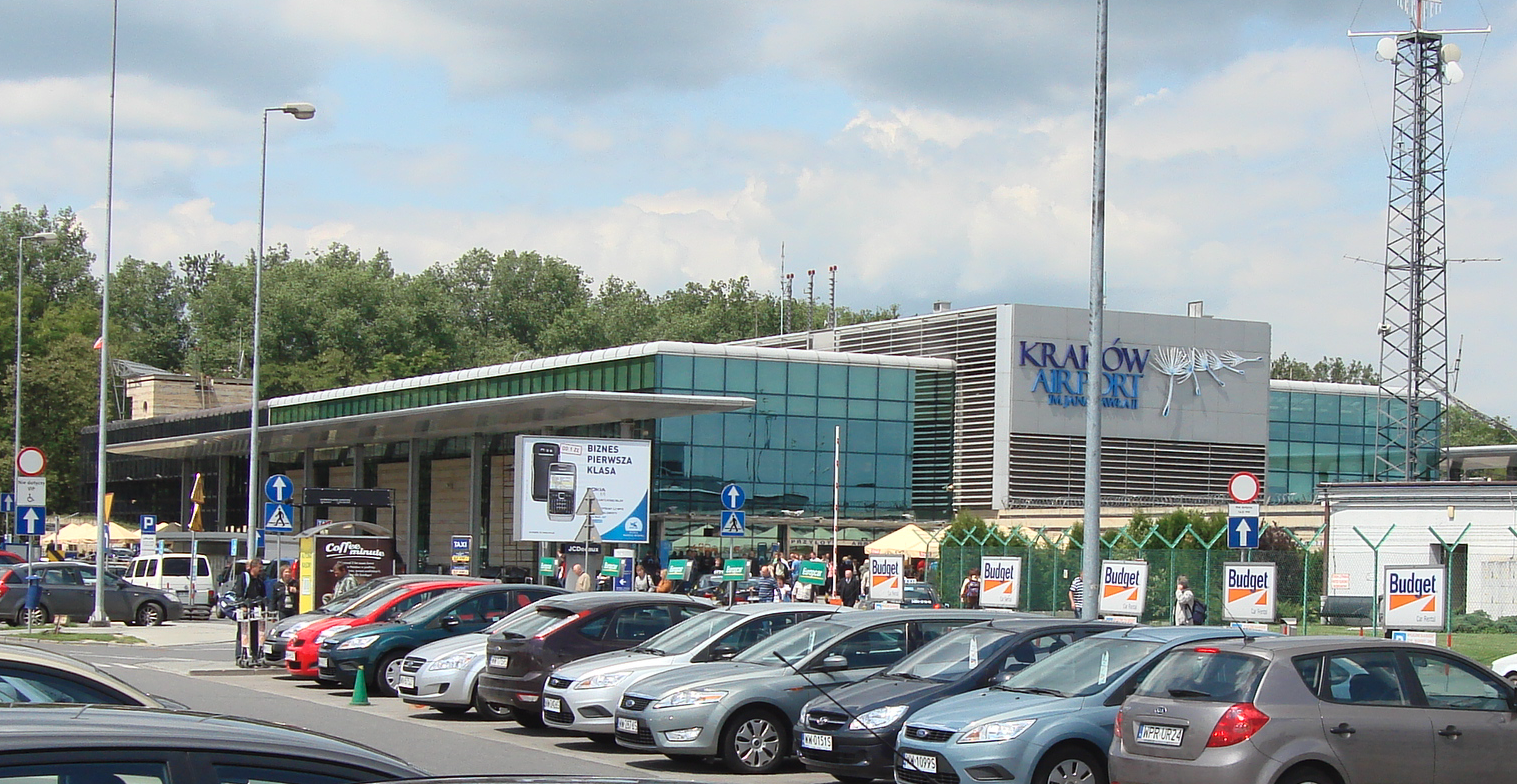
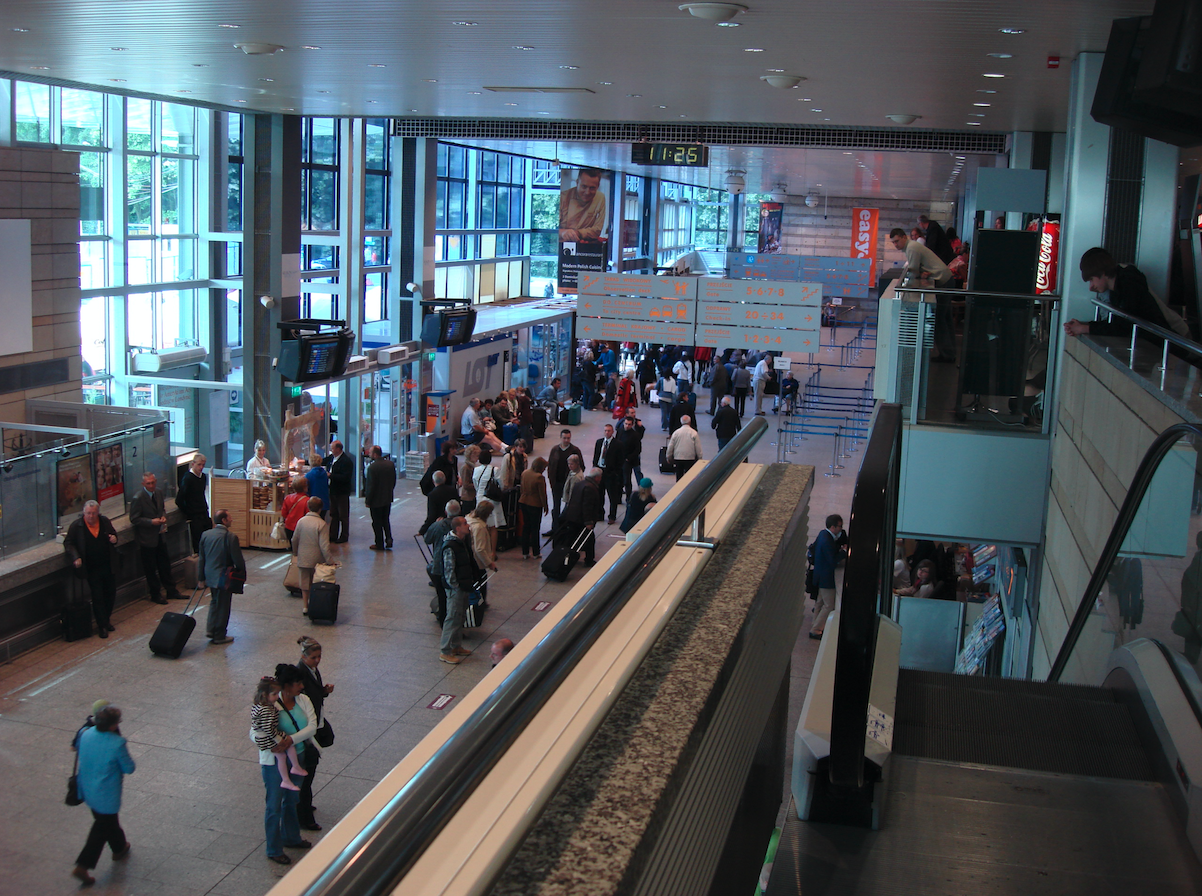
Terminal 2. 2007 year.
Multifunctional - technical building.
The construction of a workshop and garage base was to significantly improve the technical conditions in the port. It was supposed to allow for inspections, maintenance and repairs of a significantly increased amount of new equipment. This is particularly important considering the fact that all airport maintenance equipment, belonging to both MPL and LHC, was parked in the open, without any roof. This method, in addition to contributing to excessive wear and destruction, has a significant and negative impact on operational mobility and operational reliability, especially in winter conditions (low, negative temperature, precipitation, strong wind, quickly falling dusk), when equipment crews, in field conditions, they must, for example, repair equipment failure, replace brushes in snow blowers, etc.
The new facility was built, but the huge dynamics of growth in the number of passengers served forced the adaptation of some parts to the new Terminal 2, domestic.
On February 28, 2007, a domestic terminal was opened with an area of 1,733 square meters, capable of handling 500,000. people per year. From March 1, 2007, passengers can use it. Terminal 2 has a tin-type structure and is equipped with entrance gates. This is a temporary solution. In the future, when Terminal 3 is put into operation, Terminal 2 will return to the function for which it was created. The investment cost PLN 9 million.
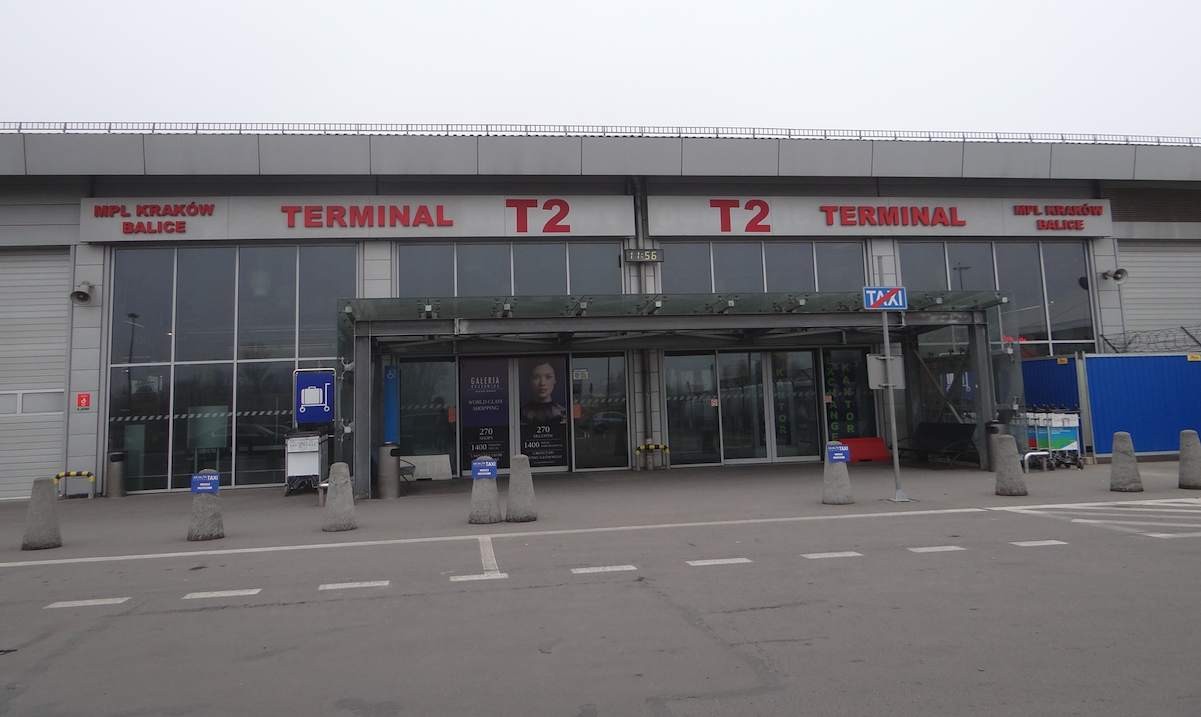
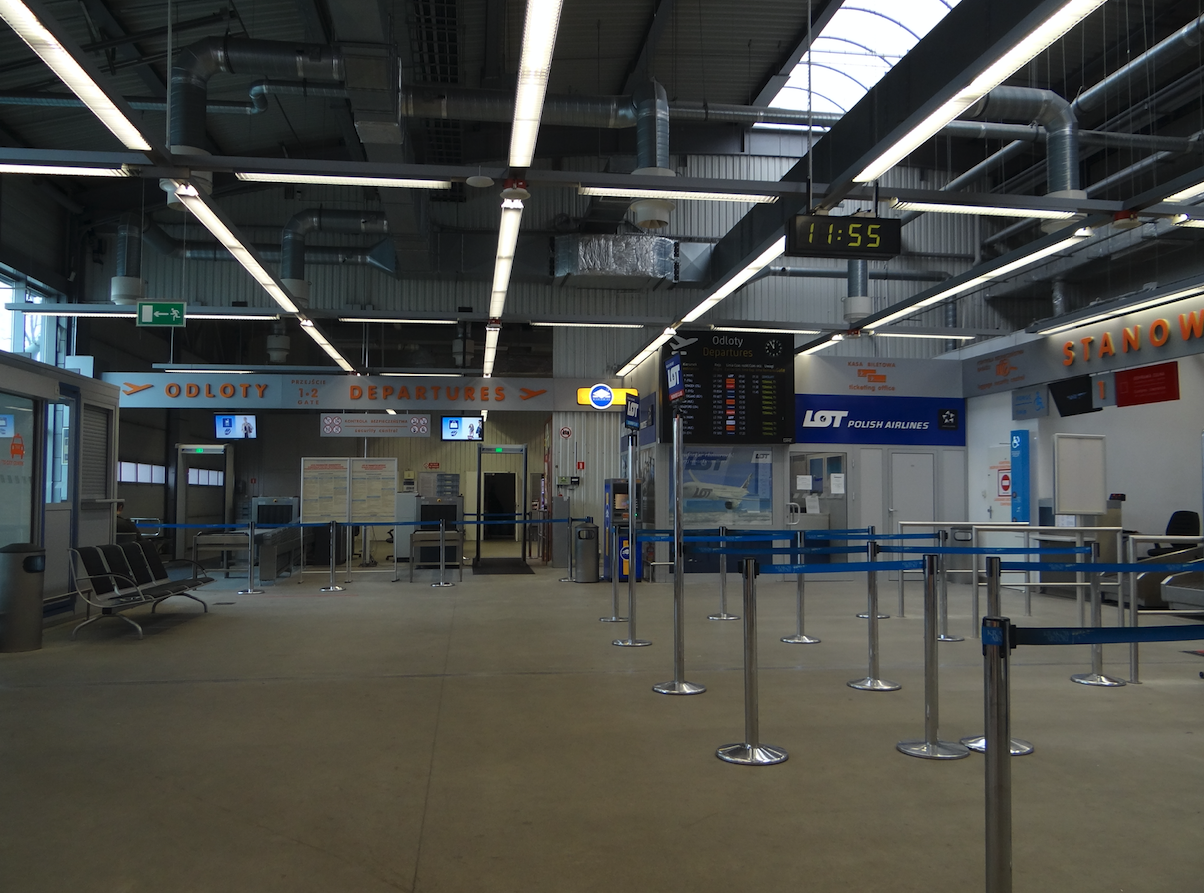
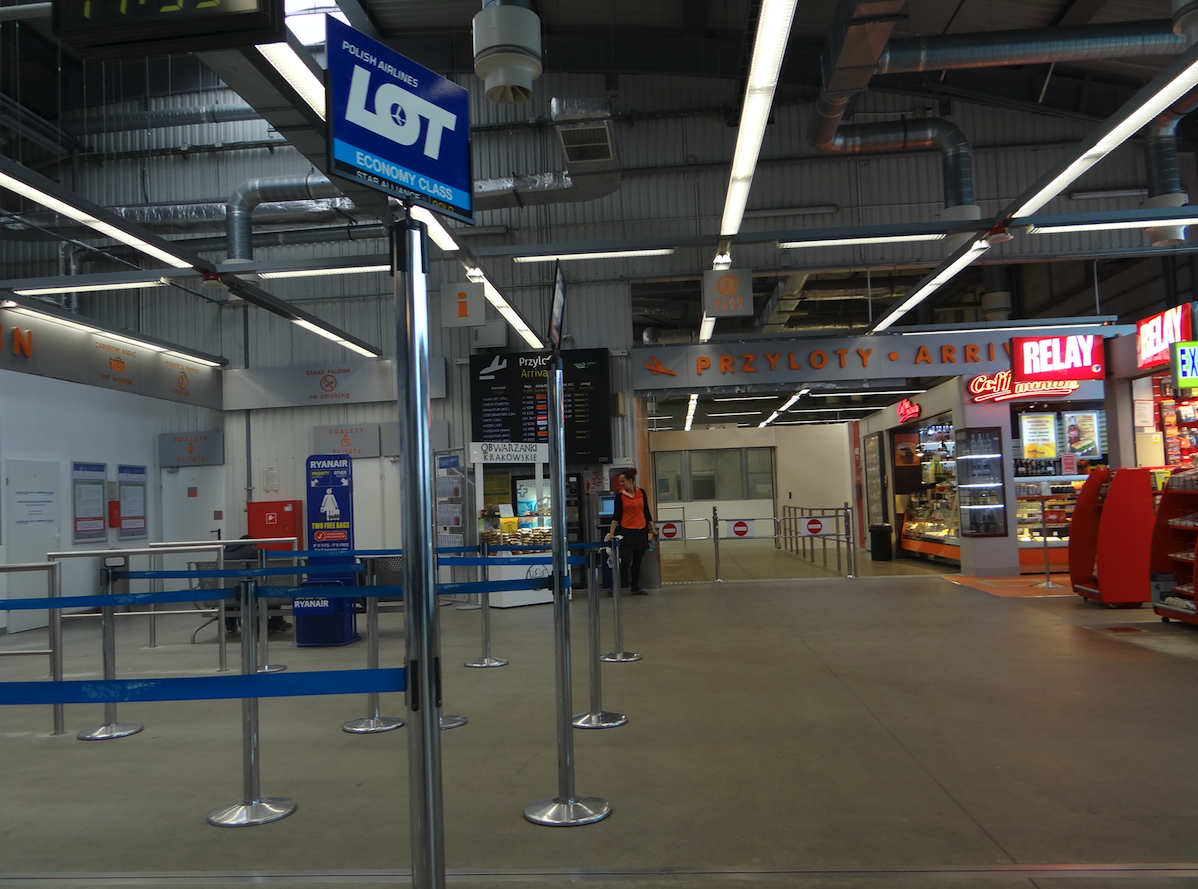
Written by Karol Placha Hetman
